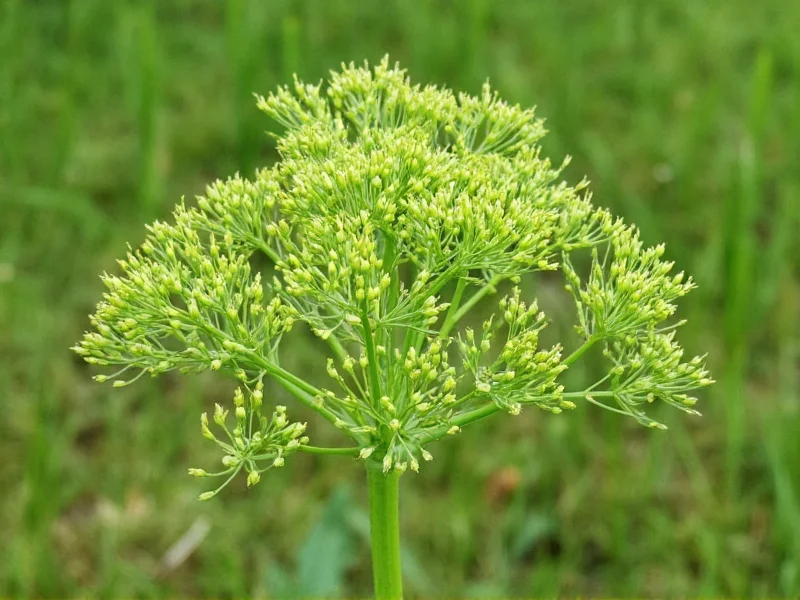Many gardeners and foragers encounter plants that resemble dill but belong to different species within the Apiaceae family. Correct identification matters significantly for both culinary use and safety reasons. While dill (Anethum graveolens) is a popular herb with delicate, feathery fronds and a distinctive tangy flavor, several look-alikes exist that either offer different culinary properties or, in some cases, pose serious health risks.
Why Distinguishing Dill Look-Alikes Matters
Mistaking similar-looking plants for dill can lead to disappointing culinary results or, in worst-case scenarios, dangerous health consequences. The Apiaceae family contains both valuable edible herbs and highly toxic species that share visual similarities. Understanding key distinguishing features helps ensure you're harvesting the right plant for your needs while avoiding potentially harmful species.
Key Visual Characteristics of True Dill
Before examining look-alikes, it's essential to recognize authentic dill features:
- Stems: Smooth, hollow, and green without purple markings
- Leaves: Fine, thread-like, fern-like foliage that's blue-green in color
- Height: Typically grows 2-4 feet tall when mature
- Flowers: Yellow umbels (umbrella-shaped clusters) that appear in summer
- Scent: Distinctive tangy, slightly citrusy aroma when crushed
Common Plants That Look Like Dill But Aren't
Fennel (Foeniculum vulgare)
Fennel represents the most frequent dill confusion due to nearly identical feathery foliage. However, several key differences exist:
- Features a distinctive bulbous base at the stem
- Stems often have a slight blue-green tint compared to dill's yellow-green
- Emits a strong anise or licorice scent when crushed (dill has a more citrusy aroma)
- Yellow flowers are slightly larger than dill's
- Grows taller, typically reaching 4-6 feet
Fennel is completely edible and commonly used in Mediterranean cuisine, but its flavor profile differs significantly from dill.
Anise (Pimpinella anisum)
Anise shares dill's delicate foliage but has distinguishing characteristics:
- Leaves are slightly broader at the base compared to dill's uniform thread-like structure
- Stems are more rigid and less hollow
- Produces white flowers rather than yellow
- Has a stronger licorice flavor than fennel
- Grows in more compact formations, typically 1-2 feet tall
Anise seeds are the primary culinary component, while the leaves have limited use compared to dill.
Poison Hemlock (Conium maculatum)
This highly toxic plant requires immediate recognition as it can be fatal if consumed. Key identification markers:
- Stems: Distinctive purple or reddish blotches or spots (absent in true dill)
- Leaves: Similar feathery appearance but with a more triangular shape
- Smell: Unpleasant, musty odor often described as "mousy" when crushed
- Height: Can grow up to 8-10 feet tall
- Habitat: Commonly found in damp areas, ditches, and disturbed soils
| Plant | Stem Characteristics | Leaf Structure | Flower Color | Scent When Crushed | Safety Status |
|---|---|---|---|---|---|
| Dill | Smooth, green, no spots | Fine, uniform threads | Yellow | Citrusy, tangy | Edible |
| Fennel | Smooth, blue-green tint | Slightly broader base | Yellow | Anise/licorice | Edible |
| Anise | Rigid, solid | Broad base, triangular | White | Strong licorice | Edible (seeds) |
| Poison Hemlock | Purple/reddish blotches | Triangular, coarser | White | Musty, unpleasant | Highly toxic |
Practical Identification Techniques
When trying to determine if a plant is dill or a look-alike, employ these field identification methods:
Stem Inspection Method
The stem provides the most reliable identification clue. Examine the lower portion of the stem for any purple or reddish markings. True dill will have uniformly green stems without spots or blotches. If you notice purple mottling, immediately treat the plant as potentially dangerous poison hemlock and avoid contact.
Scent Test Procedure
Gently crush a small leaf between your fingers and smell:
- Dill produces a clean, citrusy, slightly tangy aroma
- Fennel emits a sweet anise or licorice scent
- Anise has an even stronger licorice fragrance
- Poison hemlock has an unpleasant, musty odor often compared to老鼠 (mice)
Flower Observation Timing
While dill flowers in mid-summer with yellow umbels, poison hemlock produces white flowers earlier in the season. Fennel flowers later than dill and has slightly larger yellow blooms. Note that young plants may not have flowered yet, making stem and leaf characteristics more critical for identification.
Safety Considerations for Dill Look-Alikes
When foraging for dill or similar herbs, follow these safety protocols:
- Never consume any plant you cannot positively identify
- When in doubt about a plant's identity, consult multiple field guides or an expert
- Avoid harvesting near roadsides where plants may absorb pollutants
- Wear gloves when handling unknown plants from the Apiaceae family
- Teach children to never eat wild plants without adult verification
Culinary Differences Between Dill and Its Look-Alikes
Understanding flavor profiles helps prevent disappointing culinary results:
- Dill: Bright, tangy flavor perfect for fish, pickles, and creamy sauces
- Fennel: Sweet licorice notes ideal for Mediterranean dishes, sausages, and roasted vegetables
- Anise: Strong licorice flavor primarily used in baking and liqueurs
- Caraway: Earthy, slightly peppery taste common in rye bread and Central European cuisine
Substituting these herbs without understanding their flavor differences can dramatically alter dish outcomes.
When to Consult an Expert
Certain situations warrant professional identification assistance:
- If you find a plant with purple-spotted stems (potential poison hemlock)
- When plants appear in unusual locations or habitats
- If multiple identification features seem contradictory
- Before consuming any wild plant you're uncertain about
- When teaching children about plant identification
Local extension offices, botanical gardens, and certified master gardeners can provide reliable identification services.











 浙公网安备
33010002000092号
浙公网安备
33010002000092号 浙B2-20120091-4
浙B2-20120091-4